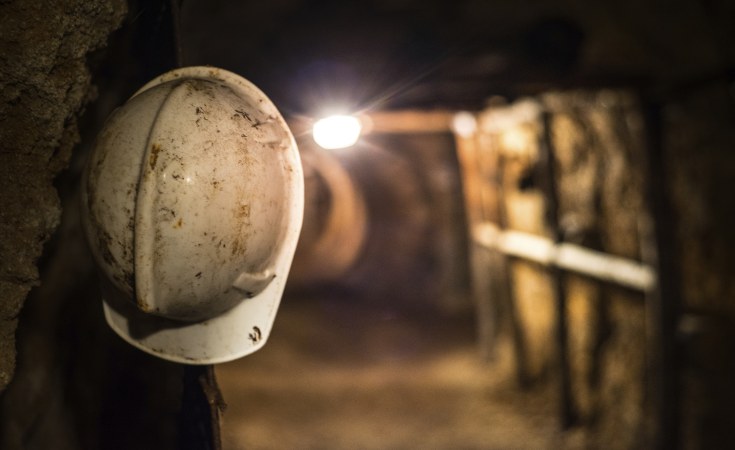To meet the goals of the Paris Climate Agreement, the SDGs and Africa's Agenda 2063, the world must decarbonize its growth models and shift to renewable energy sources, the Acting Executive Secretary of the Economic Commission for Africa (ECA), Antonio Pedro, has noted.
He was speaking during a panel discussion on 'Building a regional battery mineral value chain in Africa,' jointly organised by ECA and Afreximbank, on February 26, ahead of the 9th Africa Regional Forum on Sustainable Development (ARFSD) to be held in Niamey from February 28 to March 2.
Pedro said the shift to renewable energy sources was a resource-intensive path that required greater production of a variety of minerals that are central to decarbonization.
Africa is home to many of such minerals. The DR Congo, for example, produces more than 70% of the world's cobalt. The DR Congo and Zambia together supply 10% of global copper while Mozambique and South Africa hold significant reserves of graphite, platinum metals, lithium and more.
"We have clear opportunities not only from the global green mineral boom but also from our domestic achievements, such as the African Continental Free-Trade Area to facilitate the development of regional value chains for these green economy products," Pedro said, noting several innovative financing mechanisms that were developed to support initiatives such as the battery and electric vehicles value chains.
The organisers of the session wanted to present the specifics of the lithium-ion battery initiative to a wider audience.
"In the last two decades we have seen that without the right enabling policies and incentives, commodity super-cycles come and go, leaving our countries dependent on resource extraction," Pedro said.
He deplored the fact that about 70% of the region's exports are unprocessed commodities, a situation that can change with the right policies that prioritise industrialization and value-addition in mining and other resource sectors.
Oluranti Doherty, Director of Export Development at the Afreximbank, noted that it was disappointing that despite Africa being endowed with an array of minerals from copper, magnesium, nickel and cobalt, the continent has not been able to make energy transition.
Underlining Afreximbank's commitment to promoting an inclusive battery and electric vehicle value chain, Doherty, said the bank is promoting industrialization on the continent and is facilitating the emergence and expansion of industrial parks and Special Economic Zones in Zambia and the DR Congo.
"We are working on a framework agreement for special economic zones for the production of batteries, electric vehicles and accessories and we will facilitate the commencement of studies to facilitate the development of this facility," Doherty said.
According to a BloombergNEF study, the DR Congo is a favourable location for producing sustainable battery materials for high-nickel batteries due to its abundant cobalt resources and access to hydroelectric power.
The study, which was supported by the ECA, Afreximbank, the African Development Bank, the Africa Finance Corporation, the Arab Bank for Economic Development in Africa (BADEA), the African Legal Support Facility (ALSF), and the UN Global Compact, suggests that battery precursors produced in the DR Congo would be cheaper, environmentally sustainable and more competitive than material produced in China, the US and elsewhere.
The report estimates the global market opportunity for electric vehicles at $7 trillion by 2030 and $46 trillion by 2050.
Jean-Marie Kanda from the University of Lubumbashi highlighted that African countries need to own such projects and commit investment and appropriate funding for research on battery technology.
"Africa needs to develop standards as far as batteries are concerned. We need to focus on the assembly of these batteries and focus on mineral exploitation as well as on recycling," Kanda said.
Jean-Luc Matsaki Namegabe, a Senior Economist at the ECA, told participants that the DR Congo presented an opportunity in the development of electric batteries and vehicles not to be missed because it would move Africa up the value addition ladder as Africa was the only region that did not manufacture electric batteries.
Rabani Adamou, Director of the West African Science Service Center in Climate Change and Adapted Land Use (WASCAL), Abdou Moumouni University, said that in promoting the development of value chains for minerals, African countries must invest in research and development to understand the exploitable quantity of the minerals. In addition, he said Africa needed to invest in training and capacity building to tap the full benefits of the minerals. He underscored the need for supportive policies that will attract investment and at the same time prevent corruption, which hinders development projects in Africa.
Marit Kitaw, Interim Director of the African Minerals Development Center, a specialized agency of the African Union, said the battery and electric vehicle initiative was a huge opportunity for Africa, which has triggered a huge surge of investment coming into Africa for green minerals.
Kitaw said the Centre was in the process of developing a mineral strategy for Africa and called for the institutionalization of the initiative as well as harnessing innovative financing for its realization.
Pedro described the initiative as one of the most transformative projects for Africa, noting that it has received wide publicity and interest.
He called for the development of an ecosystem that taps capacities, expertise and partnerships that exist in Africa.
Rwanda only recovers 35 percent of mined minerals, which by end of 2021 generated $516 million. Mining is the country's second-largest export revenue earner, after tourism.
Initiatives to ensure local mineral value addition such as a gold refinery, tin smelting plant and others in the pipeline such as coltan and diamond processing plants are supposed to make local ores competitive on international markets.


